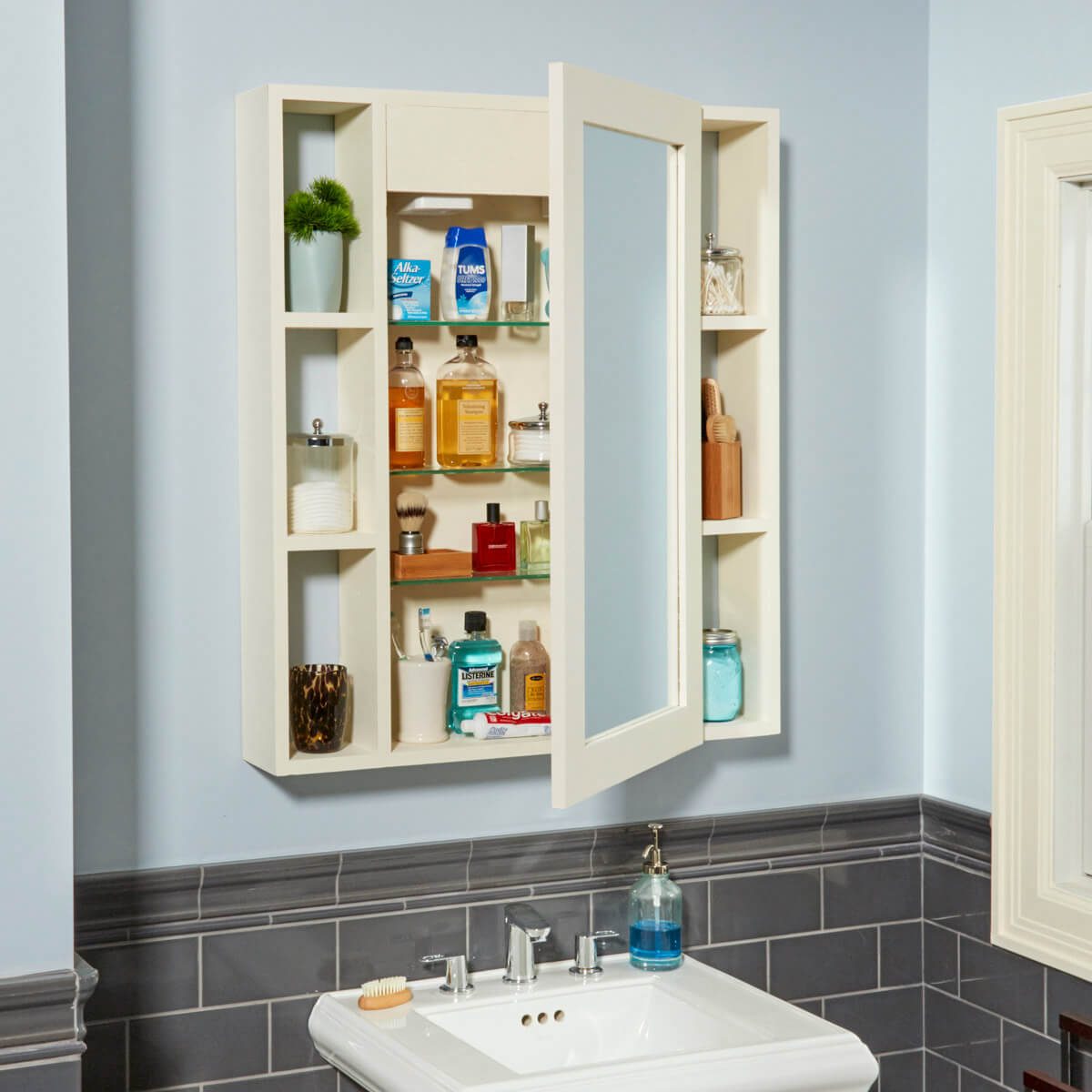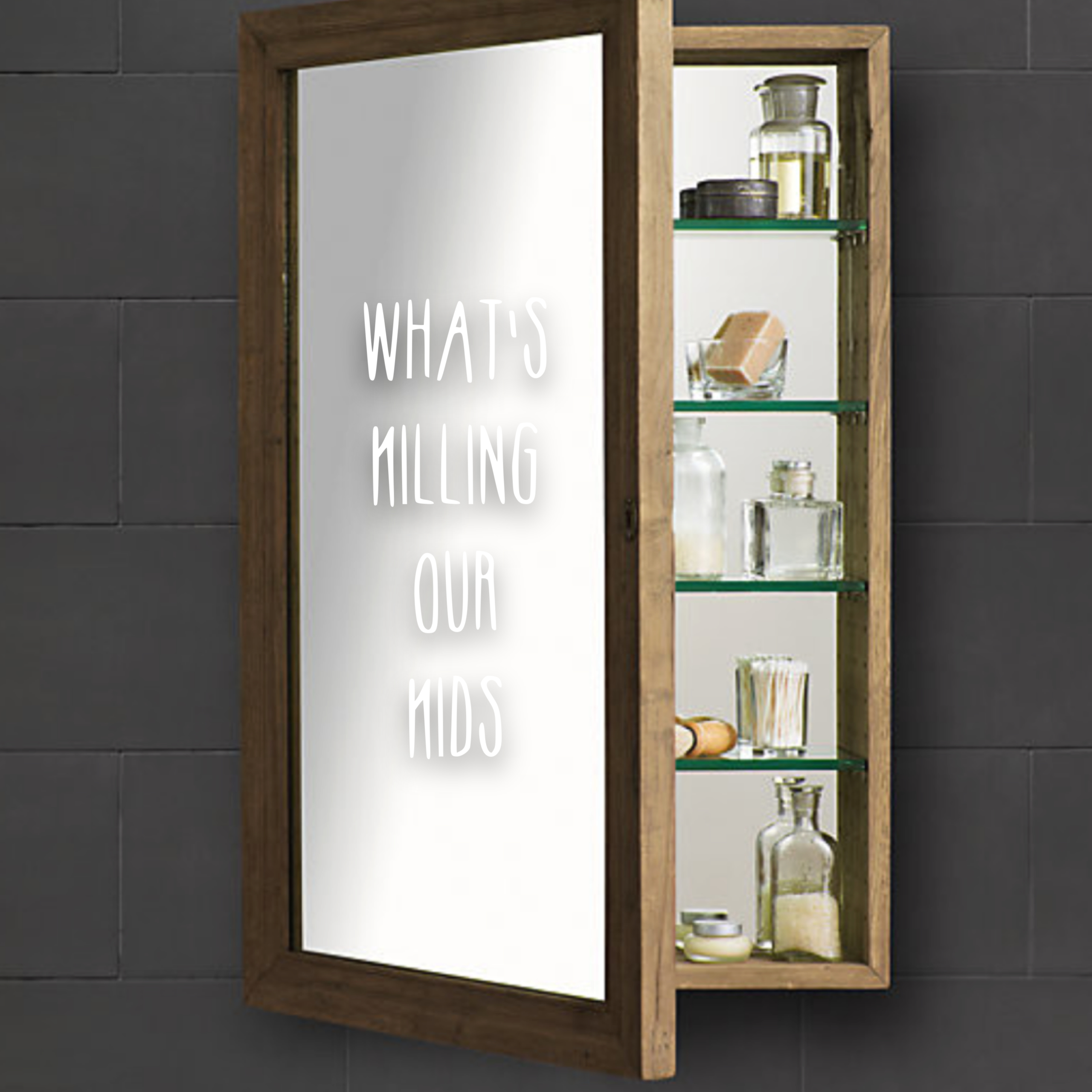Types of Unfinished Wood Medicine Cabinets

Unfinished wood medicine cabinets offer a blank canvas for homeowners to personalize their bathroom decor. The choice of wood, design, and finish can significantly impact the final look and functionality of the cabinet.
Wood Types
The type of wood used for an unfinished medicine cabinet can influence its durability, appearance, and price.
- Oak: Known for its strength, durability, and distinctive grain pattern, oak is a popular choice for medicine cabinets. It’s resistant to moisture and scratches, making it suitable for bathroom environments. Oak can be stained in a wide range of colors, allowing for customization.
- Maple: Maple is another durable hardwood with a smooth, tight grain. It’s known for its light color and ability to accept stains and finishes well. Maple is a good option for a more modern or minimalist aesthetic.
- Cherry: Cherry wood has a rich, reddish-brown hue that deepens with age. It’s known for its smooth texture and ability to polish to a high shine. Cherry is a luxurious choice for medicine cabinets, but it can be more expensive than other options.
- Pine: Pine is a softwood that’s known for its affordability and warm, knotty grain. It’s a good choice for a rustic or traditional look. However, pine is less durable than hardwoods and may require more maintenance in a bathroom environment.
Design Features
Unfinished wood medicine cabinets come in various designs to suit different bathroom layouts and preferences.
- Single-Door: Single-door cabinets are the most common type, offering a simple and practical solution for storing toiletries and medications. They are compact and ideal for smaller bathrooms.
- Double-Door: Double-door cabinets provide more storage space and can be ideal for larger bathrooms or families. They often feature a mirrored door for added convenience.
- Recessed: Recessed cabinets are built into the wall, creating a seamless and integrated look. They can be a good option for maximizing space in a small bathroom.
- Surface-Mounted: Surface-mounted cabinets are installed directly on the wall, offering flexibility in placement. They can be a good choice for bathrooms with limited wall space or unique layouts.
Finishes and Stains
Unfinished wood medicine cabinets allow for customization through the application of finishes and stains.
- Stains: Stains enhance the natural grain of the wood and add color without obscuring the texture. They come in a wide range of colors, from light to dark, allowing for a personalized look.
- Polyurethane: Polyurethane is a durable and water-resistant finish that protects the wood from moisture and scratches. It comes in both matte and gloss finishes, offering a range of aesthetic options.
- Lacquer: Lacquer is a hard, glossy finish that provides a high level of protection. It’s often used for furniture and cabinets, offering a durable and elegant finish.
- Oil-Based Finishes: Oil-based finishes penetrate the wood, providing a natural and protective layer. They are typically less durable than polyurethane or lacquer but can enhance the wood’s natural beauty.
Benefits of Using Unfinished Wood Medicine Cabinets

Choosing an unfinished wood medicine cabinet presents a range of advantages over pre-finished options, allowing for greater customization, cost-effectiveness, and a unique aesthetic appeal. This approach offers a blank canvas for your creative vision, enabling you to tailor the cabinet to perfectly complement your bathroom decor.
Customization and Design Flexibility
Unfinished wood provides the freedom to create a truly unique and personalized medicine cabinet. You can stain the wood to match your existing furniture or paint it in a color that complements your bathroom’s overall theme. This level of customization allows you to express your personal style and create a truly one-of-a-kind piece.
- Staining: Applying a stain allows the wood’s natural grain to show through while adding a layer of color and protection. There are countless stain colors available, from rich browns and warm reds to lighter shades like honey and walnut.
- Painting: Painting the cabinet provides a blank slate for any color you desire. You can choose a bold statement color or a subtle, neutral shade that blends seamlessly with your bathroom’s decor.
- Decorative Elements: Unfinished wood cabinets offer endless opportunities for decorative touches. You can add hardware like unique knobs or handles, or even incorporate decorative elements like stencils, decoupage, or carved designs.
Cost-Effectiveness
Unfinished wood medicine cabinets are often more affordable than pre-finished options. This is because the manufacturer does not have to invest in the additional steps of staining or painting, which reduces the overall cost. This affordability allows you to invest in higher-quality materials or add decorative elements without breaking the bank.
Environmental Benefits
Using unfinished wood supports sustainable practices and reduces waste. By purchasing unfinished wood, you avoid the environmental impact associated with pre-finishing processes, such as the use of volatile organic compounds (VOCs) and the disposal of excess paint or stain. Choosing natural wood materials also contributes to a more environmentally friendly bathroom design.
Installing and Finishing Unfinished Wood Medicine Cabinets

Installing an unfinished wood medicine cabinet is a rewarding project that allows you to customize the look and feel of your bathroom. With careful planning and attention to detail, you can create a beautiful and functional storage solution.
Installing Unfinished Wood Medicine Cabinets
Installing an unfinished wood medicine cabinet requires basic carpentry skills and tools. The following steps Artikel the process:
Tools and Materials
- Unfinished wood medicine cabinet
- Stud finder
- Level
- Tape measure
- Pencil
- Drill with a drill bit matching the screw size
- Screwdriver
- Safety glasses
- Work gloves
Step-by-Step Installation
| Step | Description | Image | Notes |
|---|---|---|---|
| 1 | Locate studs in the wall using a stud finder. Mark the stud locations with a pencil. | [Image of a person using a stud finder to locate studs in the wall.] | Ensure the medicine cabinet is secured to the wall studs for stability. |
| 2 | Use a level to determine the desired height for the medicine cabinet. Mark the wall with a pencil. | [Image of a person using a level to mark the desired height for the medicine cabinet.] | Maintain a consistent level to ensure the cabinet is installed straight. |
| 3 | Hold the medicine cabinet against the wall at the marked height. Use a pencil to mark the screw locations on the wall. | [Image of a person holding the medicine cabinet against the wall and marking screw locations.] | Ensure the marks are accurate and align with the stud locations. |
| 4 | Use a drill to create pilot holes at the marked screw locations. This will prevent the wood from splitting. | [Image of a person drilling pilot holes in the wall.] | Pilot holes should be slightly smaller than the screw diameter. |
| 5 | Secure the medicine cabinet to the wall using screws. | [Image of a person securing the medicine cabinet to the wall with screws.] | Tighten the screws securely, but avoid overtightening. |
Safety Precautions
- Wear safety glasses to protect your eyes from flying debris.
- Use work gloves to protect your hands.
- Be careful when drilling into the wall to avoid hitting any electrical wires or plumbing lines.
Finishing Unfinished Wood Medicine Cabinets
Once installed, you can personalize your medicine cabinet with various finishes.
Staining
- Sand the cabinet thoroughly to create a smooth surface for the stain.
- Apply a wood stain using a brush, cloth, or sponge. Follow the manufacturer’s instructions for application and drying time.
- Apply multiple coats of stain for a deeper color and richer finish.
- Allow the stain to dry completely before moving on to the next step.
Painting
- Prepare the cabinet surface by sanding it to remove any imperfections.
- Apply a primer to the cabinet to create a smooth, even surface for the paint.
- Use a high-quality paint specifically designed for bathroom use.
- Apply two to three coats of paint, allowing each coat to dry completely before applying the next.
Sealing
- Apply a sealant to protect the finished cabinet from moisture and spills.
- Choose a sealant that is compatible with the stain or paint used.
- Follow the manufacturer’s instructions for application and drying time.
An unfinished wood medicine cabinet offers a rustic charm that can complement various bathroom styles. Its natural grain and texture provide a warm and inviting feel, while its unfinished state allows for customization. To create a cohesive look, consider the flooring in your bathroom.
A plush carpet for bedroom floor might not be the ideal choice, but a durable tile or wood flooring would complement the cabinet’s rustic aesthetic. Once installed, the unfinished wood medicine cabinet can be stained or painted to match your bathroom’s color scheme, adding a personal touch to your space.
An unfinished wood medicine cabinet can be a great addition to any bathroom, offering a rustic charm and the opportunity for customization. If you’re short on space, consider incorporating a diy desk for small bedroom into your design. This can provide a functional workspace while keeping your bathroom tidy and organized.
The same principles of space-saving and creative design that apply to a small bedroom desk can be applied to your medicine cabinet, ensuring it’s both stylish and functional.
